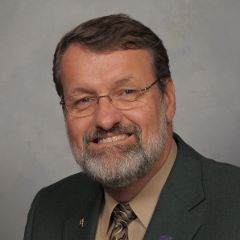May 12, 2015
Updates from the Associate Director

New look and new format for the Tuesday Letter. In the migration towards the new CMS, a new format for the Tuesday Letter needed to take place. Decisions to align the input and the product similar to K-State Today was the obvious decision. Content won't change, just the format in which it is delivered. Feedback is always welcome.
Kansas legislature remains in session and at this time the information shared in weeks past with regards to the state funding remains unchanged. We await the final actions of the legislature, Board of Regents, and Kansas State University central administration to provide us with the final budget to which we can work.
Kansas County Commissioners Association meetings were held in Wichita last week. Trudy Rice, Extension Community Vitality, and I were participating with roundtable discussions. In dialog with the Commissioners attending each roundtable, we began with a brief overview of the work taking place across the state around the Grand Challenges. I also explained how Research and Extension could be different in each of their counties. One example of the difference comes through local priority setting. A second reason for differences is in local staffing. Did you know that we currently have 9 counties with 1 agent, 31 counties with 2 agents, 9 counties with 3 agents, 4 counties with 4 agents, and 7 counties with 5 or more agents. Additionally, we have 3 districts with 3 agents, 5 districts with 4 agents, and 8 districts with 5 or more agents. All of these differences from county to county will give commissioners a different experience with Extension locally. After some background, I posed one question to them to open up the conversation. "Why should K-State Research and Extension exist in your county?"
Roughly 50 commissioners from all across the state participated in the roundtables. Commissioner responses were very positive and described all kinds of experiences. They often identified their examples by talking about their local Extension and whether it was a district or a single county. What I noted was that all responses reflected on examples of PROACTIVE educational programs. The examples they shared included crop production, nutrition, improving food availability, livestock systems, positive youth development, community improvements, and the list went on. The best part was how they shared with each other on the importance of the communication they had with the Extension professionals, and the importance of the work to the people in their county. I hope some commissioners will talk with you about what they heard and any questions that may arise from that discussion. I think they recognized the diversity of programming that takes place and the opportunities for valued programming from across K-State Research and Extension.
I appreciate so much the proactive programming that is going on across the system, and the impact it is having. Keep up the great work, and have a great week!